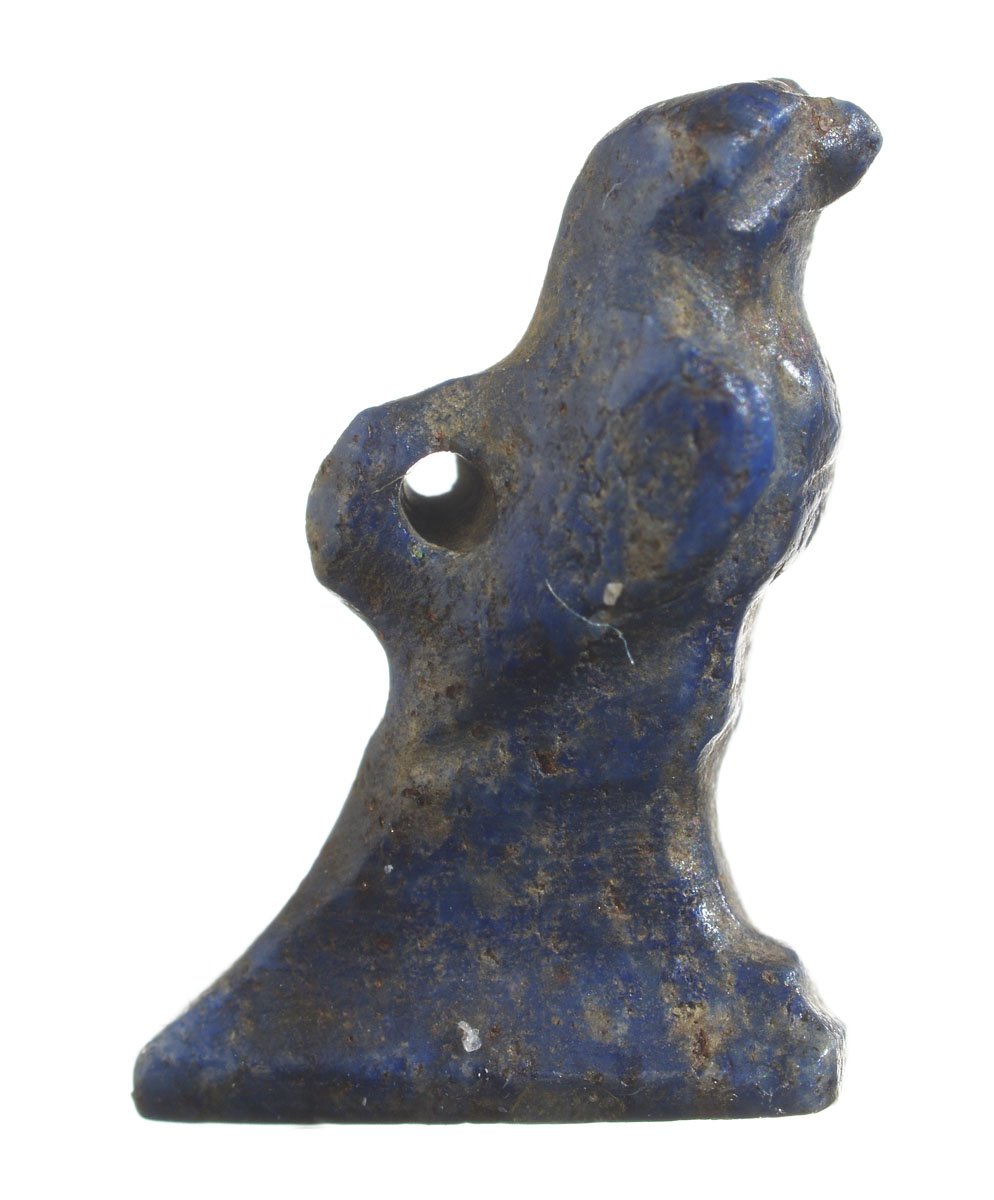
Hawk
Egyptian Art
| Place of production | Saqqara (?), Egypt |
|---|---|
| Date | 4th-1st centuries B.C. |
| Object type | tomb equipment |
| Medium, technique | Wood, paint |
| Dimensions | 170 × 48 × 37 cm |
| Inventory number | 63.9-E.1-2 |
| Collection | Egyptian Art |
| On view | Museum of Fine Arts, Basement Floor, Ancient Egypt, Funerary beliefs |
The hexagonal coffin has preserved the intactness of its decoration. It is made from wooden boards fastened together with pegs. It was coated with a gesso layer onto which the greyish-white grounding colour was applied. The face section was carved separately and fastened to the lid with wooden pegs.
The chest section of the lid is almost completely covered by a beautiful wesekh¬-collar painted in many colours and decorated with floral and geometric motifs, and its fasteners at the shoulders are fashioned in the form of nicely executed falcon heads. Under the collar is the squatting sky goddess holding the symbol of life in her outstretched arms and wearing a sun disc on her head. A thin, colour band separates her figure from the mummy lying on a bier, next to which a priest in a jackal-headed mask, or symbolically Anubis himself, is performing the funerary rite. Four canopic jars are depicted under the bier containing the embalmed internal organs of the deceased.
The back of the coffin’s bottom is adorned with a beautiful female figure standing on the hieroglyphic symbol for gold, since she is Hathor, the “mistress” of gold. The crowned falcon she is wearing on her head is the symbol of the West, i.e., the afterlife, since Hathor was also the “mistress” of the afterlife depicted in the form of a cow at the entrance of the cemetery welcoming the deceased.
This record is subject to revision due to ongoing research.